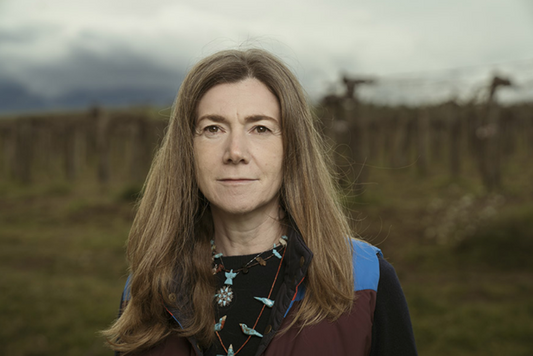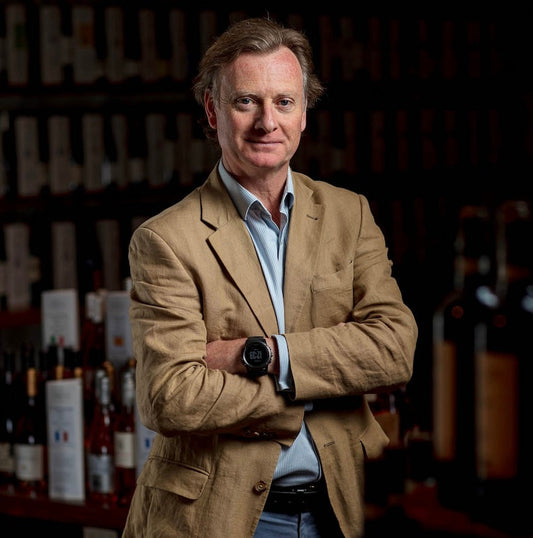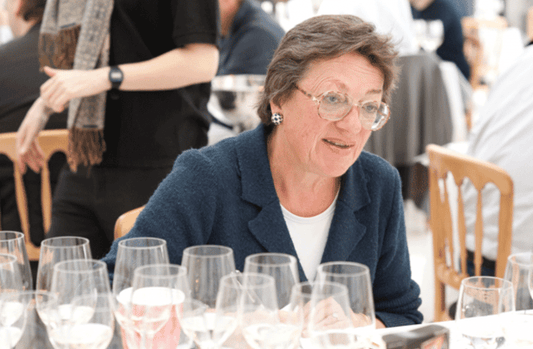| The wine dinner, three months in the planning, was a resounding success. It was held in a private venue in Dublin, with a chef engaged specifically to compose a menu to match the wines. Book-ended by champagne and Sauternes, with white and red burgundy as supporting players, there could be no doubting that the stars of the evening were the two vintages of Château Lynch-Bages – 1989 and 1990. Both were exemplary, supremely satisfying, and to try to pin them down with mere words would be to miss the point altogether. No superlative, however floral, could capture the harmony and elegance of these wines, yet that was only the beginning, for the context in which they were enjoyed – a good meal and great company – amplified and underpinned their abundant charms.
More prosaically, the ‘sweet’ maturity of each wine effortlessly made the point that Lynch-Bages, more than many others, needs time to show at its best, particularly in great vintages. This is the one concrete assertion that can be made about this celebrated fifth growth and in this respect it is vrai Pauillac: forbidding in youth, the fruit cloaked by impenetrable tannins, but marvellous once Father Time has worked his magic, smoothing the wine into magnificence. I have long contended that a ‘double decade’ is needed to get everything stitched seamlessly together.
For newcomers to the wine, tasting young vintages that refuse to charm can be a perplexing experience – and reminds me of the first time I listened to Beethoven’s Grosse Fugue, baffled that anybody could rate this jangling racket highly. It is now one of my favourite pieces of music. Ditto Lynch-Bages. But where did that very Irish half of the name come from?
The Lynch family from Galway had a long history of importing wine into Ireland before James Lynch moved to France. His son, Thomas, established himself as a wine merchant in Bordeaux and bought Lynch-Bages in 1749. His sons, Michel and Jean-Baptiste, were prominent in the wine business and acquired other châteaux in addition to Lynch-Bages. Wearing a different hat, Jean-Baptiste also served as mayor of Bordeaux. Lynch-Bages was sold in 1824 and eventually came into the hands of the current owners, the Cazes family, at the outbreak of World War II.
Its modern incarnation as one of the most highly-regarded and sought-after clarets dates back 50 years – to a car journey that saw Jean-Michel Cazes leave Paris at the wheel of his brown Renault 16, loaded to the gills with luggage. He was reversing a journey made 20 years previously when he left Bordeaux; now he was travelling back to the Médoc to make Lynch-Bages his permanent home. In the decades since, thanks to his efforts and, more recently, those of his son Jean-Charles, Lynch-Bages’ reputation has climbed steadily to today’s exalted position. Though ranked as a fifth growth in the 1855 classification there is no argument that its true status today places it at second growth level. And in great vintages, like the pair above, it is not shamed by comparison with the first growths.
Jean-Michel Cazes has now written his autobiography, though labelling it thus suggests a personal memoir of tale and anecdote that might not speak to a wide audience. Its appeal is anything but limited for, while the work is rooted in Bordeaux, almost the whole world of wine is included in Cazes’ recollections and reflections. He travelled widely, meeting all the great characters of wine, who in turn could say they met him – and the lucky reader is afforded a ringside seat for this five-decade odyssey.
No matter how far he travelled, however, he could not match the journey made by a half-bottle of Lynch-Bages 1975 that went into orbit onboard the space shuttle Discovery in 1985, where it clocked up a journey of 2.9 million miles. When visiting Lynch-Bages a few years ago the bottle, signed by astronaut Patrick Baudry, could only be viewed from a distance, for it sat under a glass dome and behind bars at the château. The apt title of the book, From Bordeaux to the Stars, references the half-bottle’s journey.
It is nigh-on two centuries since Monsieur Lynch sold the château that continues to bear his name, yet Irish wine lovers still like to claim ‘Lunch-Bags’ as one of their own and, along with Léoville Barton there is no Bordeaux château better known in Ireland. The Cazes family have always acknowledged with pride the link back to Galway and a warm welcome is always afforded them whenever they visit. This book is sure to receive a warm welcome also and will find a place on many wine lovers’ bookshelves, Irish and otherwise.
|




